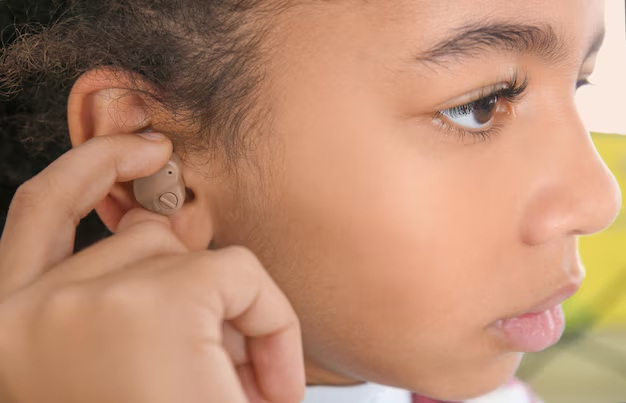Finding Your Perfect Fit: Discovering the Best Hearing Aid for Your Needs
In today's fast-paced world, maintaining clear and effective communication is more important than ever. However, for those experiencing hearing loss, this can pose a significant challenge. Thankfully, advancements in technology have led to the development of sophisticated hearing aids designed to enhance auditory experiences. But with so many options available, how do you determine which is the best for you? This guide aims to help you navigate the diverse landscape of hearing aids, ensuring you make an informed and satisfying choice.
Understanding the Basics of Hearing Aids
Before diving into the specifics of the best hearing aids on the market, it's crucial to understand the basic components and functionality of these devices.
What Are Hearing Aids?
Hearing aids are small electronic devices that amplify sound, helping people with hearing impairments to hear more clearly. They typically consist of a microphone to pick up sound, an amplifier to enhance it, and a speaker that transmits the sound to the ear.
Types of Hearing Aids
- Behind-the-Ear (BTE): These are worn over the ear and are suitable for a wide range of hearing losses.
- In-the-Ear (ITE): Custom-fit to the outer ear, slightly less visible than BTE models.
- In-the-Canal (ITC) & Completely-in-Canal (CIC): These fit within the ear canal and are the most discreet options.
- Receiver-in-Canal (RIC): Similar to BTEs but with a speaker in the ear canal, improving sound quality.
Key Considerations for Choosing a Hearing Aid
Understanding your specific needs is crucial when selecting a hearing aid. Consider the following factors:
- Degree of Hearing Loss: Different aids cater to varying levels of hearing impairment.
- Lifestyle Needs: Consider how active and social you are to find a device that adapts to your environment.
- Visibility and Comfort: Do you prefer a discreet device or one that’s easier to handle?
- Technology Features: Modern hearing aids offer features like Bluetooth connectivity and noise cancellation.
What to Look for in the Best Hearing Aids
With the variety of styles and features available, selecting a hearing aid can quickly become overwhelming. Here are some essential features that many experts agree contribute to a high-quality hearing aid:
Sound Quality
- Look for aids that offer clear, natural sound.
- Consider devices with feedback reduction and sound processing technology.
Battery Life
- Battery longevity varies; rechargeable options are increasingly popular.
User-Friendly Controls
- Easy-to-use controls and adjustments are vital for daily convenience.
Advanced Features
- Bluetooth and smartphone integration allow for easy control and streaming.
- Automatic noise adjustment to adapt to different sound environments.
Durability and Warranty
- A robust build and comprehensive warranty ensure long-term satisfaction.
Exploring Popular Brands and Models
While specific brands and models cannot be endorsed directly, many popular choices are recognized for their innovative approaches and quality. Consumers often consider models with a reputation for reliability, customer service, and advanced technology.
Feature Comparison Chart
| Feature | Benefit |
|---|---|
| ⭐ Bluetooth Connectivity | Wirelessly stream calls and media for convenient listening. |
| 🔋 Rechargeable Batteries | Enjoy long-lasting, hassle-free use without frequent battery changes. |
| 🌐 Directional Microphones | Focus on specific sounds in crowded environments. |
| 🎛️ Customizable Programs | Personalize settings to different listening situations. |
Navigating the Purchasing Process
Consulting a Professional
It's essential to consult hearing care professionals. They can conduct comprehensive hearing tests, help you understand your specific needs, and suggest suitable devices based on their expertise.
Considering Cost and Insurance
- Budget Considerations: Hearing aids can vary significantly in price. Set a budget that accommodates both initial cost and maintenance.
- Insurance Options: Check if your insurance plan covers any costs related to hearing aids.
Enhancing Your Experience with Hearing Aids
Beyond simply buying a hearing aid, maximizing its benefits involves a few additional steps:
Ongoing Maintenance
- Regular Cleanings: Keep your devices clean to maintain functionality and hygiene.
- Routine Check-Ups: Schedule periodic visits with your audiologist for adjustments.
Embracing Technology
- App Integration: Utilize smartphone apps for additional control and customization.
- Accessories: Consider additional tools such as remote mics and TV streamers for enhanced use.
Staying Informed
Being updated on the latest developments and tips in hearing aid technology can enable you to make better decisions and get the most out of your devices.
Summarizing Key Takeaways
Taking the steps outlined ensures you'll find the most suitable hearing aid for your needs. Here's a quick recap:
- 🎯 Assess Your Needs: Identify the type and degree of hearing loss and lifestyle requirements.
- 🕵️♂️ Consult a Professional: Work with an audiologist to explore options.
- 💡 Explore Features: Consider advanced features like Bluetooth connectivity and rechargeable batteries.
- 🛠️ Maintenance: Regular cleaning and professional check-ups enhance longevity and performance.
- 📱 Embrace Innovation: Use apps and compatible accessories to maximize your hearing aid’s potential.
Ultimately, the best hearing aid is the one that fits your unique needs and preferences, offering you a seamless hearing experience and restoring the joys of clear communication. With this comprehensive understanding, you’re now equipped to embark on your journey to better hearing with confidence.

Related Topics
- a Plus Hearing Aid Centers
- a Real Pain Showtimes Near Centerville
- Are Airpods Bad For Your Ears
- Are Apple Second Generation Airpods Hearing Aids
- Are Audien Hearing Aids Just Amplifiers
- Are Costco Hearing Aids As Good As Others
- Are Costco Hearing Aids Good
- Are Hearing Aid Domes Interchangeable
- Are Hearing Aid Subscriptions Worth It
- Are Hearing Aid Tax Deductible